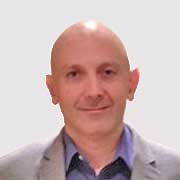The DELE B2 Speaking Test: A job offer in a spanish class
The first objective of this text is to propose some presetation strategies to help students to preare for the DELEL B2 oral exam.
The ideas presented here is due the experience obtained during the 12 hour course taught by 3 Korean students who were 13 and 14 years old, which showed satisfactory results. The second objective is to share such an experience.
The DELE exams
The DELE Spanish as a Foreign Language Diploma, designed by the Cervantes Institute, is the most recognised Spanish language qualification internationally. They are a collection of 6 exams, whose approval certifies each of the levels of the Common European Reference Framework (MCER)
A1 Access
A2 Platform
B1 Threshold
B2 Advanced
C1 Fluent
C2. Master
El examen B2, específicamente, consta de cinco pruebas: Compresión escrita, Expresión escrita, Comprensión auditiva, Gramática y conciencia comunicativa y Expresión oral. Esta última, a su vez, tiene tres partes y su duración total es de 30 minutos.
The DELE B2 Oral Test
To begin the test, the examinee receives an everyday subject (free time, health, holidays, television, modern working etc.) around which a presentation is presented, lasting between 2 to 3 minutes. The examiner has 15 minutes to prepare themselves (It is possible to make some notes to use during the presentation). After this time, before beginning the presentation, the examiner should describe and tell a cartoon (PART 1) with a choice of two options that are to be presented at that time. The cartoon series must be told and finally pretend to be one of the characters and react according to the oral story. When finished, (PART 2) of the presentation begins. When this has been completed, a small dialogue will take place with the interviewer about the subject thereafter.
In this way, the test time will be divided into two periods: 15 minutes of preparation and 15 minutes to describe the cartoon, present and talk.
The strategies that we set out are specifically designed for PART 2. The other two parts, of course, also require the exercise of concrete skills and the application of adequate strategies. However, in this article we will only focus on the narrative. Those who wish to find more information about all aspects of the test can visit the Cervantes Institute website:
http://diplomas.cervantes.es/
Experience with Young students
The students who had the opportunity to work had a higher level of Spanish. They had rooted themselves in Mexico City for more than 3 years. Even though they did not attend the courses regularly in the Mexican public school, they have studies with intensity the language in their educational institutions. They are disciplined students who learn other languages (French, English, mandarin). All of this is relevant because B2 is challenging; even, it is not common for students to attend this exam, not only due to the demands placed by the language organisation but also because the contents and subjects are aimed at young adults. This situation was known by the students and their parents. Before it, they were positive and showed awareness and stimulation.
The complexity of the exercise in question lies not only in the challenges created by creating synthetically correct sentences in relation to the subject but in organising them coherently in speech, unitarily and formally. Students who possess the vocabulary and are adequately fluent in the language to reach this level, very often can become frustrated by their intentions due to problems with structure and the formalities (this is often more challenging for younger students). Also, one needs to bear in mind the time-nervousness factor.
In this part of the test, it is expected that the student continues the general introduction- development and conclusion framework. Initially, the students with whom we had worked with found difficulty in defining and articulating these parts. It was necessary to work in developing speeches and implementing strategies to structure any topic under a general framework.
Formality
All students who take this test should be aware of the time of speech that they are expected to use. They should avoid colloquialisms and should educational or accepted expressed should be used in formal contexts. If we understand this in relationship to the structure, we can start to suggest to students the parts of the presentation (introduction, development, ending) that can be presented using relevant textual markers. Thus, for the introduction the student can begin with expressions such as “in the first place,” “to begin with,” “first of all I want to” etc. Similarly, the student can express an opinion with phrases like “from my perspective,” “from my point of view,” “in my point of view,” “I consider that”, which are considered to be more formal. In the same way, it is possible to precede the conclusion with phrases such as “to conclude,” “in conclusion,” “finally,” “to end with” etc. The student should know which linguistic registers are expected in the text and to reflect on their relationship with the structure.
Part of this awareness includes other adequate linguistic expressions (although not precisely linked to a part of the presentation). For example, to express cause and effect: “for this reason”, “due to this”, “the motive behind this” etc. Also, it is possible to bring attention to other connectors and textual organisers such as: however, on the other hand, in this same sense, in my case, firstly, secondly, etc.
Structure
One of the difficulties that students find was organising their ideas and providing them with unity and cohesion, to adhere adequately to the 2 to 3 minutes that they had to speak for. The students repeatedly showed a tendency to ramble and deviate from the subject. The extent of this problem was in the model of their presentation, potentially useful for all subjects and to which they could turn to without wasting time and formalities.
The result is the following. And it is worth saying, that it was a product of working together with students. We will take for example the subject on “Free Time” as an outline:
Presentation Structure “FREE TIME”
Introduction
1. Define the subject: What is Free time?
2. My point of view on the topic: “What do i do in my spare time?
3. Examples: “What do i do and where do i do it?”
Development
4. Highlight a problem: “there isn’t enough free time in the modern world,” “people don’t use their free time adequately”
5. What causes the problem “working doesn’t give us time to do anything”,
“Television and the internet wastes our time”
6. Give examples to the problem: “the situation of free time in my country or my personal situation”
Conclusión
7. Solution or final reflexion: “people should treasure their free time and make the most of what they have” “we should find free time in our lives even though it’s difficult”
As you can see, it is relatively simple to adapt the topic to any structure. The students did not find it difficult to follow the model. After some trials, they were able to fluently prepare some brief presentations. In this case, it plays very much to favour of examining the general nature of the topics. This allowed flexibility shown in the proposed model:
1. Defining the subject
2. The subject from my experience
3. Examples
4. Highlighting a problem
5. Causes of the problem
6. Giving examples of the problem
7. Solution or final reflexion
The final result of this exercise was that the student expressed themselves in the following ways:
To begin with, free time is …
In my case, when I have free time …
From my point of view, people don’t use their time adequately …
In my country for example …
The modern world is demanding and for this reason we don’t have enough free time …
To conclude, i consider that free time is necessary …
Final Commentary
By applying these small strategies we consider that the student should find the second part of the DELE B2 oral test better. In our case, the results obtained were successful and even useful in other communication tasks.
It is important to bear in mind the pronunciation, grammar and lexis, also evaluated in the test. Teachers should pay close and special attention to these questions. We think that what we reveal here is useful especially for students who have difficulties with the formality/structure, as is the case with younger students, even maybe in their own language. A reflection with both teacher and student should establish models of this type which can be useful to promote awareness of the major structures of the language, the discourse types and their purposes.
In conclusion, we end with another topic structured below in the model which we propose to expose more accurately:
Presentation structure: “FOOD NOWADAYS”
Introduction
1. Define the subject: “What is food?, What is todays food like?”
2. The subject from my experience: “How do i feed myself and my family?”
3. Examples: “What food is eaten normally nowadays?”
Development
4. Highlight a problem: “The food we eat these day is bad for us”, “People don’t eat adequately”
5. Causes of the problem: “The food is artifical”
6. Give examples of the problem: Junk Food
Conclusion
7. Solution or final reflexion: “People should eat a balanced diet”



 English
English Español
Español Deutsch
Deutsch Français
Français Italiano
Italiano Ру́сский
Ру́сский 
